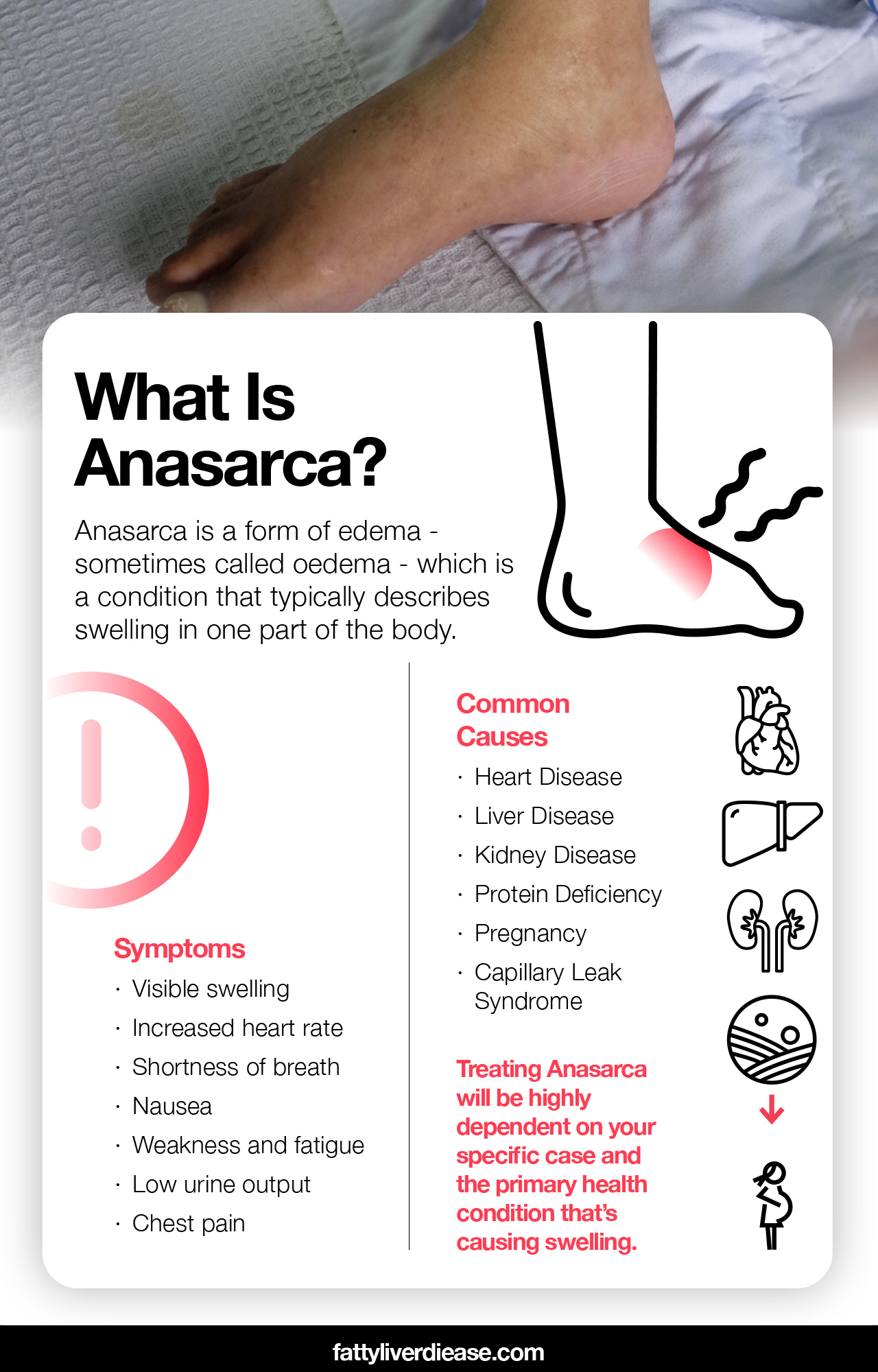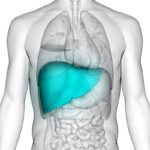Anasarca is a severe swelling condition that is relatively rare. The condition is usually a symptom of another primary and chronic disease. Although anasarca is not common in the general population, it’s very helpful to be aware of the signs and symptoms, especially if you have one of the commonly co-occurring conditions.
Read on to find out everything you need to know about anasarca.
What Is Anasarca?
What is anasarca edema? Anasarca is a form of edema – sometimes called oedema – which is a condition that typically describes swelling in one part of the body. For example, lymphedema primarily affects the arms or legs, and diabetes mellitus may cause localized swelling in a lower extremity.
Unlike other forms of edema, anasarca does not affect only one area of the body. Instead, anasarca causes generalized swelling throughout the entire body. Anasarca causes the accumulation of fluid in tissues throughout the body, leading to a swollen appearance.
What causes fluid retention? Swelling occurs as a result of increased blood pressure in the capillaries, excessive permeability of the capillaries, or low oncotic pressure. (1) Capillaries are extremely small blood vessels, and oncotic pressure refers to the blood pressure of blood plasma. When pressure is imbalanced, or the capillaries allow more compounds than usual to cross its membrane, this can result in fluid retention.
In addition to visible swelling, symptoms of anasarca include:
- Increased heart rate
- Shortness of breath
- Nausea
- Weakness and fatigue
- Low urine output
- Chest pain
Common Causes of Anasarca
Let’s go through some of the most common causes of anasarca.
Heart Disease
Heart disease and congestive heart failure are common causes of anasarca. When the heart cannot function normally, blood does not circulate properly. This forces blood to stall in the veins that carry blood through the lungs. As a result, fluid leaks into the lungs and causes a swelling called pulmonary edema. Heart disease and congestive heart failure can also lead to the generalized swelling that’s characteristic of anasarca.
Liver Disease
Liver cirrhosis and liver failure may cause anasarca. When the liver is affected by cirrhosis, this means that the liver contains a lot of scar tissues and is therefore unable to carry out its functions. Essentially, fibrotic scar tissue has replaced healthy liver tissue. The liver is then unable to produce essential proteins, leading to a shortage of serum albumin, or hypoalbuminemia. This can cause a buildup of interstitial fluid, which refers to the fluid build-up in connective tissues. Ascites are one of the more common forms of edema that an individual with liver cirrhosis may experience, though anasarca is also possible.
Kidney Disease
Renal disease and renal failure are common causes of anasarca. When an individual suffers from chronic kidney disease, the kidneys are unable to filter blood efficiently, and therefore have trouble getting rid of excess fluid. As a result, fluid accumulates throughout the body.
Nephrotic syndrome is another kidney condition that causes anasarca. For individuals with nephrotic syndrome, the kidneys fail to carry out their function as a filter. As a result, too much protein is lost in the urine, causing albumin protein levels in blood plasma to drop dangerously low. This leads to fluid retention.
Protein Deficiency
Protein malnutrition has serious repercussions for so many biological processes throughout the body, from muscle synthesis and immune system function to brain and liver health. Severe protein deficiency can also cause anasarca. When an individual doesn’t consume an adequate amount of amino acids from dietary protein, the body doesn’t have raw materials to make biologically relevant proteins, such as those present in plasma. A shortage of plasma proteins causes
Pregnancy
Numerous changes occur throughout the body in response to pregnancy. Edema in the lower legs and feet tends to be a more common presentation of fluid retention in pregnancy as a result of eclampsia. However, anasarca is still possible. Pregnancy may lead to an increase in capillary blood pressure, causing anasarca. (1) Any swelling during pregnancy requires immediate medical attention.
Capillary Leak Syndrome
Capillary leak syndrome is a serious condition that may come on suddenly. In capillary leak syndrome, fluid from blood vessels leaks into surrounding tissues such as muscle and connective tissue. The condition requires immediate treatment.
Visiting the Doctor
If you notice any symptoms of anasarca, it’s critical to seek medical attention immediately to determine the underlying cause. The physician will carry out a physical examination and analyze your medical history. The physician will also run blood and urine tests that indicate liver and kidney function. You may also undergo an EKG and an echocardiogram to analyze heart function. Determining the underlying cause of anasarca is critical for determining the most appropriate and effective course of treatment.
When conducting a physical examination, the physician will determine whether the edema you are experiencing is pitting or non-pitting edema. The physician will use pitting edema grading or a pitting edema scale to determine the severity of the edema. Determining whether you have pitting or non-pitting edema can give the doctor a clue as to the underlying cause for anasarca.
Treating Anasarca
The type of treatment you undergo will be highly dependent on your specific case of anasarca and the primary health condition that’s causing swelling.
Your physician may prescribe a medication like furosemide or spironolactone, which are diuretics. Diuretics help the body get rid of excess fluid. There are several types of diuretics available, including loop diuretics and thiazide diuretics. Your physician will prescribe a diuretic that works best for your specific condition.
Certain dietary changes may also play an important role in managing anasarca and associated causes. For example, you may benefit from cutting saturated fat and refined carbs out of your diet while limiting your sodium intake. Getting high-quality protein with optimal ratios may also be beneficial. Always ask your physician about what dietary recommendations will help you manage fluid buildup and anasarca.
Conclusion
Anasarca is a concerning condition that causes fluid retention. Because anasarca is usually indicative of a serious health condition, it’s important to seek medical attention immediately. Medications, dietary changes, and treating underlying causes can help control anasarca.

References:




















